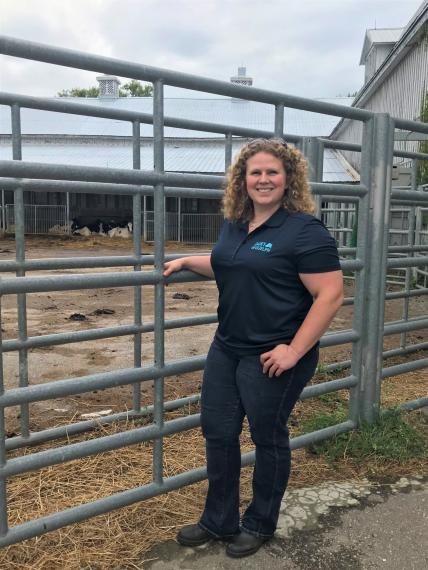From veterinarian to researcher: Taika von Königslöw works to improve best practices for antibiotic treatment in calves

Could the use of selective antibiotic treatment strategies at veal operations decrease the opportunity for bacteria to develop antimicrobial resistance?
Taika von Königslöw, a doctor of veterinary science candidate in the Department of Population Medicine, is looking at prudent use of antibiotics for calves upon arrival at veal operations.
While antibiotic use plays an important role in animal health and welfare in individual or group medical scenarios such as disease treatment or outbreak prevention, reducing overall use can help prevent bacteria from developing antibiotic resistance.
Researchers want to develop strategies to reduce overall antibiotic use to improve animal health without sacrificing animal welfare. The Veterinary Capacity Program actively supports these researchers, such as von Königslöw, by providing funding and support, as for Ruminant Field Services. The program aims to provide solutions for provincially significant animal health topics and raise the standard of veterinary care and public health, specifically by improving antibiotic practices.
Von Königslöw is interested in metaphylactic use of antibiotics, which focuses on control and prevention of outbreaks and illness. A calf that has recently arrived at a veal facility is at high risk of disease infection and the group is at high risk of an outbreak, usually because of the stress of being moved into a new area with different feed and housing and exposure to new animals.
“Think of it like a preschool classroom,” says von Königslöw. “When kids first go to school, you can almost guarantee that they are going to come home sick with something.”
Currently, farmers may choose to treat all calves with antibiotics when they arrive at a veal facility—a blanket treatment approach to prevent and control disease during this high-risk period. But researchers are working toward helping farmers identify those calves that are at highest risk of getting sick and treating only those calves, allowing for more selective treatments and lower antibiotic use at arrival.
Selectively treating those at highest risk of pneumonia and diarrhea would reduce antibiotic use and decrease antibiotic resistance. Reducing overall use of antibiotics would make farmers more cost-efficient, reduce their risk of promoting the development of superbugs and enable them to raise healthy calves, says von Königslöw.
Funding for this research was provided by the Ontario Agri-Food Innovation Alliance.
Articles in Research magazine are written and produced in part by participants in the Students Promoting Awareness of Research Knowledge (SPARK). See more stories from the 2019 Agri-Food Yearbook (PDF).